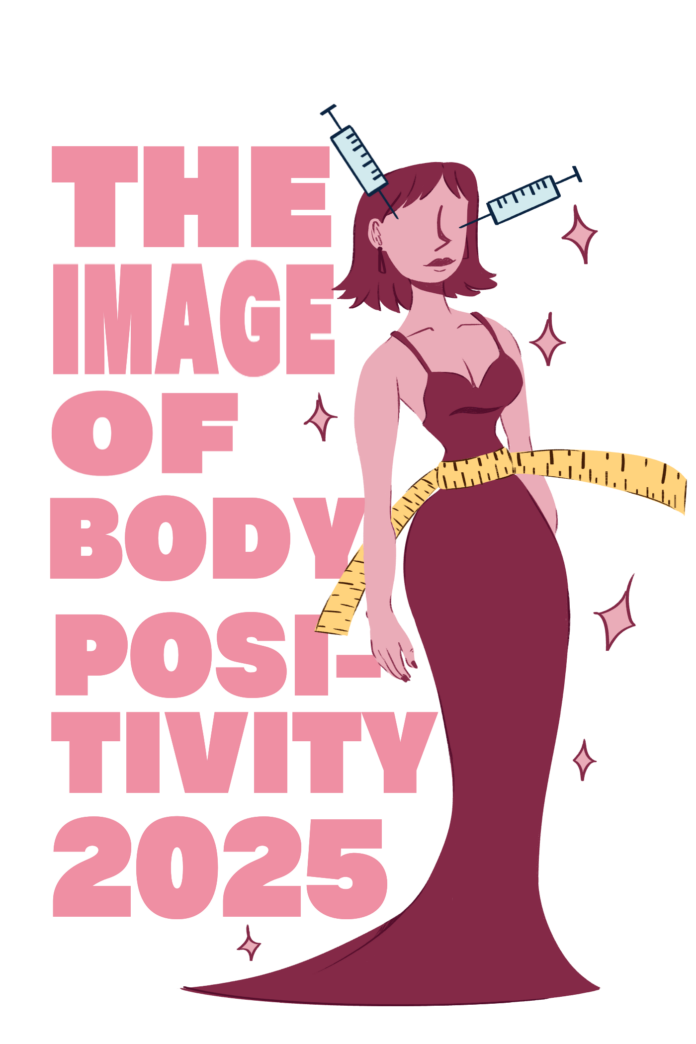UC Davis senior fashion lecturer speaks on the regression of body positivity in the fashion industry
BY BETH MUNRO-MORRIS — arts@theaggie.org
Inclusivity in the fashion industry saw significant strides throughout the 2010s, with a growing demand for diversity fueled by the rise of social media. Progression has taken a halt amid the resurgence of Ozempic in mainstream culture and the subsequent return of size 0 on runways. The pendulum seems to be swinging back toward the glorification of ultra-skinny and, in turn, opportunities for plus-size models are becoming increasingly scarce.
Adele Zhang, a senior fashion lecturer at UC Davis, offers a critical perspective on the uncertain future of body positivity in fashion, shedding light on the inner workings of the industry. Ranging from technical design in the sample room to the business of apparel trade, now teaching at the university level, Adele’s rich experience provides a unique insight into the industry’s troubling regression.
“The fashion industry wields immense power when it pushes a trend, and striking a balance between those trends and the diverse needs of individuals is very challenging,” Zhang said. “When diversity in body types is overlooked, it reflects a broader disregard for the social and cultural backgrounds of consumers.”
While she doesn’t claim to have a straightforward solution to this challenge, Zhang’s experience running a fashion show in China underscores a commitment to diversity and inclusion that current runways seem to be lacking. Recognizing the fashion industry’s need for broader representations of identities, she chose models that better reflected the general population.
“I selected garments from retail stores and hired floor staff to model real clothing for real clients,” Zhang said.
She attributes the success of the show to its relatability and resonance with consumers.
“It was no longer a prestigious event reserved for private guests; it attracted ordinary, everyday people,” Zhang said.
Zhang’s approach exemplifies how the industry can drive sales by boosting consumer confidence. Fashion companies tend to prioritize trends and marketability over genuine body positivity, with plus-size models sometimes serving as ‘tokens.’ Such models are picked merely to fulfil diversity requirements, their presence often a superficial ploy to make a brand appear more progressive. What companies can fail to realize is that by fully embracing and investing in diversity, consumer demand can rise, along with profits.
Instead, the fashion industry isn’t promoting a truly ‘healthy’ look, with many influential brands guilty of glamorizing underweight figures. A recent trend report on size inclusivity, following the “Big Four” fashion weeks in New York, London, Milan and Paris, revealed that nearly 95% of the looks featured straight-size models (U.S. sizes 0 through 4). The majority of these models were on the extremely thin end of the spectrum.
This trend extends beyond the runway, with more and more celebrities undergoing extreme weight loss. Speculation of celebrities using weight-loss drugs like Ozempic continues to rise as this shift becomes more widespread across mainstream culture, raising concern for not only the fashion industry but society as a whole.
Hayden Ma, a third-year cognitive science major at UC Davis, discussed the current state of body positivity in the fashion industry, highlighting its potential harm from a psychological perspective.
“Through experience and exposure, we build up strength and accuracy in our mentalizations of the things in our environment, and we adjust our schemas because of it,” Ma said. “With the constant exposure to the idealized beauty standards we see in the fashion industry, our ideas of what a woman is supposed to look like is getting progressively further from realistic standards.”
Ma also said the industry’s regression has affected her on a personal level.
“As women, we are told that every body type is different, yet current runways demonstrate the opposite, insinuating that one size fits all,” Ma said. “The constant pursuit of any idealized body type is exhausting, but when that body type is literally unachievable, the damage can be multiplied tenfold.”
Ma continued to stress the different perceptions that consumers gravitate toward, noting that relatability is the main thing that we, as shoppers, are looking for.
“The fashion industry distorts our perception of what is considered normal or more importantly, ‘healthy,’” Ma said. “We want to see people that look like us and relate to them — it’s part of human nature. When we don’t, we’re left with two options: feeling sad and inadequate or changing ourselves to fit the mold. Both are equally as harmful.”
Zhang said that body shame is unacceptable, but she also stressed the importance of self-awareness.
“There’s a grey line,” Zhang said. “Denouncing a group of people is wrong and unproductive — what’s more important is educating people on how to stay healthy.”
Zhang said the change needed to reshape the industry lies in the hands of the consumer.
“People have the chain the wrong way around: […] If the consumer voices their needs, the industry will be forced to change to cater for consumer demands,” Zhang said. “The consumer has the right to pick and choose what they want, the power rests with them.”
Written by: Beth Munro-Morris — arts@theaggie.org





